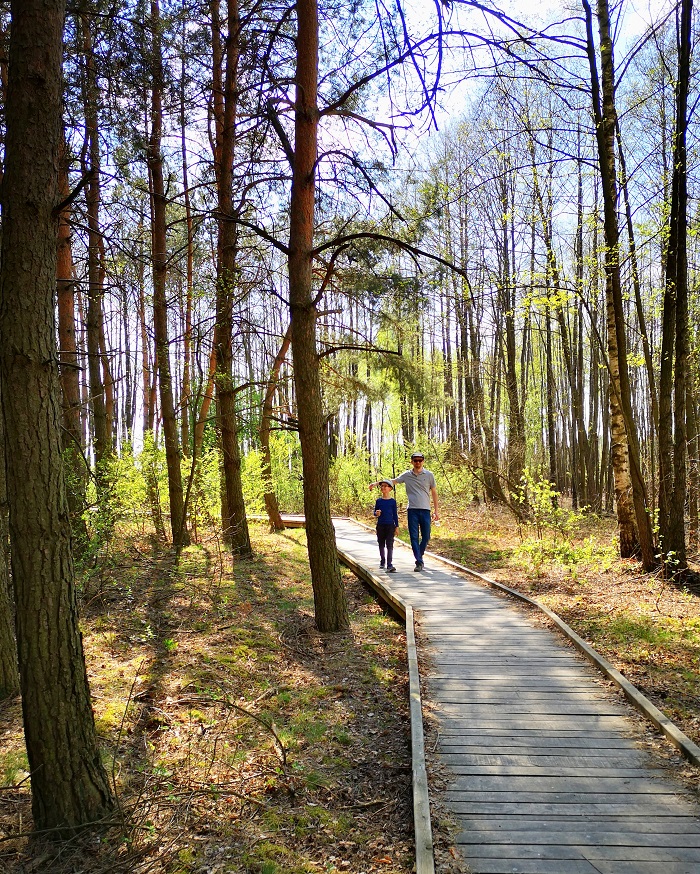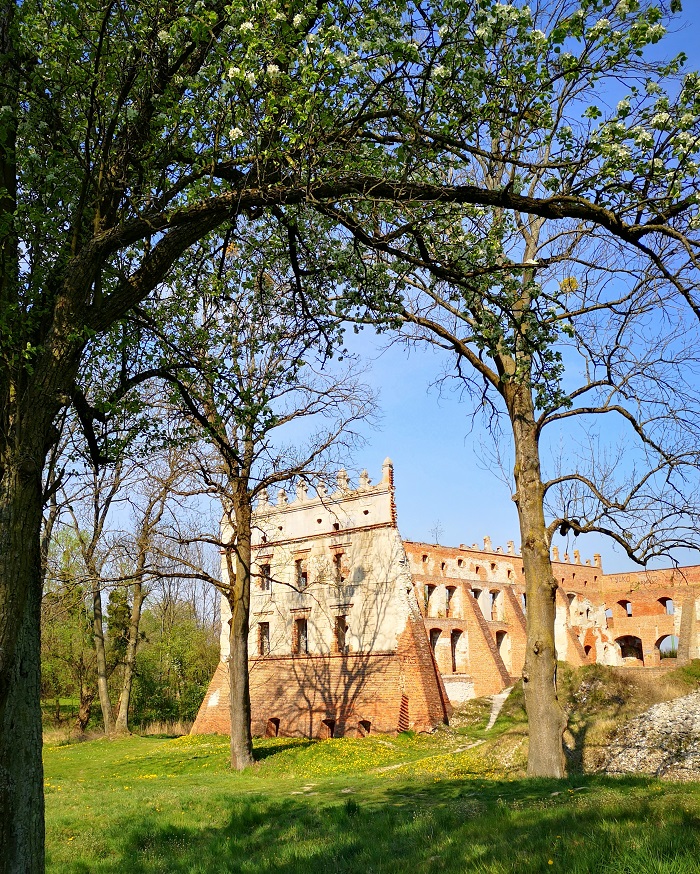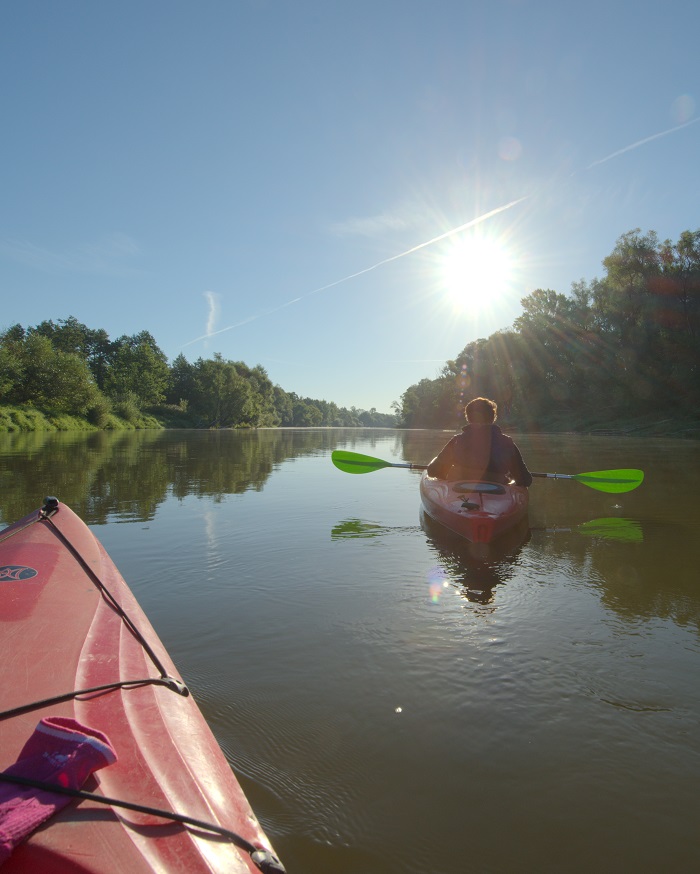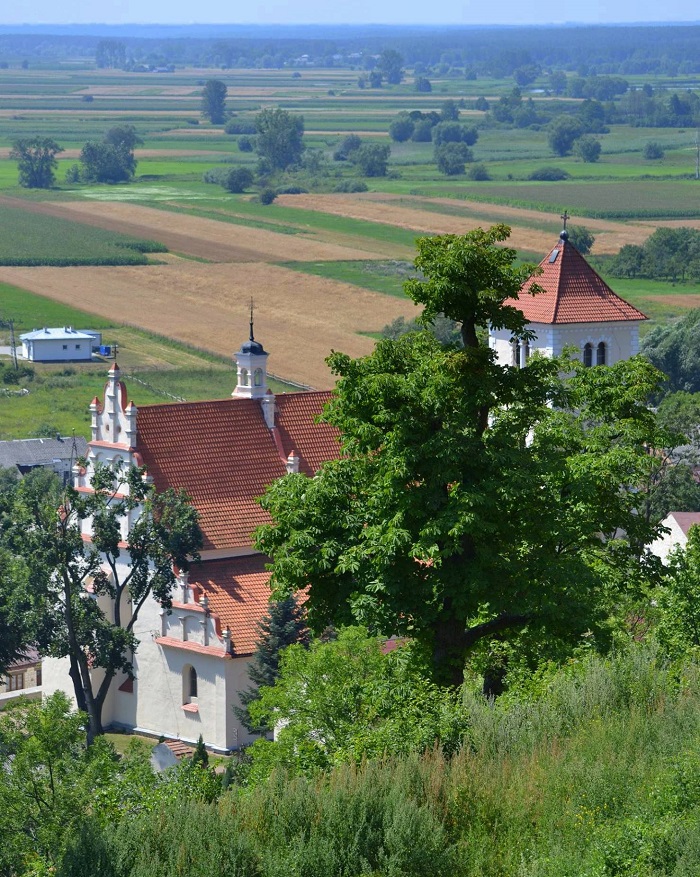The Lublin region "in the wild" edition, unique and mysterious. We have a lot of ideas to discover the beautiful area between Vistula and Bug rivers and we will gladly share them with you. On foot, on a bike, on a kayak along the eastern border of Poland, or maybe at night, under the moonlight and with a flame of a torch? Check out our suggestions, fitting the current situation. There's more coming! *Attention, the amount of greens and blues in this article can cause particularly good mood.
1. In the land of fir, beech, and tarpan | Roztocze National Park

Did you know that the Roztocze National Park is characterized by the highest afforestation among all national parks in Poland? This forest kingdom is home to many interesting species of plants and animals, including the Polish konik derived from an extinct tarpan. Put on comfortable shoes and off you go. It is worth to start exploring the park from Zwierzyniec, where the natural and historical path to Bukowa Góra begins. The prize will be a picturesque view of the mosaic of fields and forests of Roztocze. What's next? How about the nearby Echo Ponds? It is also a great place to observe nature. If you're lucky, you'll spot a herd of lovable wild horses. Then take the picturesque trail to Florianka, a former forest settlement of the Zamoyski family entail. It is here that the Polish Horse Breeding Center is located.
Click and learn more about the Roztocze National Park: lubelskietravel.pl
2. The Magic of Polesie | Polesie National Park

Poleski National Park is a real paradise for lovers of nature, peace, tranquility, and bird chirping. Do you have your binoculars and camera at hand? Then you are ready for an adventure in the land of swamps and marshes. There are nature paths in the park, equipped with kilometers of wooden footbridges and observation towers allowing to see nature closely. And there is so much to admire! About 200 species of birds live here, including very rare ones, such as the Aquatic Warbler. Cranes and white-tailed eagles are other unique winged inhabitants of Polesie. We recommend the Pieszowola Ponds and the Perehod trail, where, apart from two observation towers, an ornithological shelter has also been installed. The other paths include: Dominik Oak, Spławy, Insurgent Camp, Czahary, and the Little Turtle trail - a path specially prepared for the youngest travellers.
Click and learn more about the Polesie National Park: lubelskietravel.pl
3. Say BOO! and scary on! | Picturesque ruins, castles, and palaces

If only the walls could speak... Once imposing castles and palaces, today picturesque ruins shrouded in mystery. It is no different in the case of the climatic remains of the palace in Zawieprzyce (Łęczna county), proudly towering over the meandering Wieprz river. According to the legend, this place became the grave of a pair of lovers who died tragically. Is it true? It is worth to ask a mysterious figure dressed in airy robes, who regularly appears in the area at night. Another interesting place is Stołpie (Chełm county) with a peculiar medieval tower, which is the oldest brick building in the voivodeship. In the vicinity of Krasnystaw, in the village of Krupe, there are ruins of a Renaissance palace. It is said that somewhere within them there is an entrance to the tunnel leading directly to the pyramid on the Arian Hill in the nearby village of Krynica. The 20-meter-high pyramid is one of the oldest and largest structures of this type in Poland. Kryłów, Bychawa, Chodel - also these places await the fans of thrilling sightseeing tours.
4. L(o)ess is more | The Land of the Loess Gorges

In the vicinity of Kazimierz Dolny and Nałęczów, there is the densest network of loess gorges in Europe! The most famous ravines include Korzeniowy Dół, Wąwóz Głowackiego, Wąwóz Glinianki or Wąwóz Na Króla in Bochotnica, which runs near the ruins of the castle of Esterka, the legendary mistress of King Casimir the Great. How about a walk under the moonlight and with a flame of a torch? Kazimierz Dolny Nighttour - Kazimierz Dolny Guide - invites to an exciting evening tour of Kazimierz Dolny. The program includes, among others, visiting the Cemetery Gorge, known as the Death Ravine. Scary much? You will certainly not be bored here. The Land of Loess Gorges is an ideal destination for Nordic walking enthusiasts. There are around 200 kilometers of trails designed for fans of this form of activity.
Click and learn more about the Land of Loess Gorges: lubelskietravel.pl
5. In the forest kingdom | Janowskie Forests

Janów Forests are part of the Solska Forest, one of the largest forest areas in Poland. A visit to the Arboretum or a walk along the Imielty Ług path will be an ideal idea - the reserve protects vast swamps, rushes, and a lake, where wild birds and rare plant species have their refuge. Less than 20 kilometers to the east, there is another must-see for all nature lovers. Forest Szklarnia Reserve delights with a variety of landscapes, from swamps to meadows and forests. In the nearby village there is the only refuge of the Biłgoraj horse in the country. Not only these exceptional animals live within the Janów Forests. A herd of the European bison has been living here since 2021, so far numbering eight individuals. Make sure to visit Porytowe Wzgórze, which was a witness to the greatest guerrilla battle of World War II. At the Zoom Natury recreation park, you will discover a picturesque lagoon with a beach.
Click and learn more about the Janowskie Forests: lubelskietravel.pl
6. Road 66 Lublin style | The Multicultural Trail of the Bug River

Lublin "Road 66", also known as the "Nadbużanka" or simply provincial road No. 816, is approximately 165 kilometers of adventure along the eastern border of Poland and the European Union. During the trip, you will visit places on the Bug river, where time has stopped and history is still alive: the only Byzantine-Slavic parish in the world in Kostomłoty; the sanctuary in Kodeń with the miraculous painting of Our Lady of Guadalupe stolen from the papal chapel in Rome; the picturesquely situated Monastery of St. Onuphrius in Jabłeczna, one of the most important Orthodox sanctuaries in Poland; Włodawa - the City of Three Cultures. Do you prefer to swap your four wheels for a two-wheeler? Good choice - use the East of Poland Cycling Trail Green Velo. It is best to admire the nature of the Bug river from the kayak's perspective. The best canoeing trips are provided by KajakowaPrzygoda.pl - kayak rental on the Bug River. Unforgettable impressions!
Click and learn more about the Multicultural Current of the Bug River: lubelskietravel.pl
7. When the Sun was a god | Kurgans and gords
This time the time machine will take you back to the old ages when the Sun was a god. Near Krzczonów, in a mid-field grove, there is a thousand-year-old barrow cemetery. Some say that there is an unusual atmosphere in that place. Who knows... maybe ancient oaks, sacred trees of the Slavs grow here for a reason. Another interesting place is the Dominikanówka barrow cemetery located near Krasnobród. It is one of the best-preserved pagan necropolises in the country, including as many as 9 mounds (XVII - XII century BC!). In the Karczmiska commune there is one of the most popular early medieval sites in the Lublin area - a stronghold and a mound in Chodlik. Or maybe you will follow in the trail of the famous Cherven Grods? According to historians, Cherven was in the village of Czeremno (Tomaszów County). Among the Cherven Grods, there are also the stronghols in Sąsiadka, located on the edge of the Szczebrzeszyński Landscape Park, and Gródek (Hrubieszów county). Numerous remnants of early medieval settlement can be observed in the vicinity of Guciów in Roztocze. The partially reconstructed fort in Żmijowiska, which is a branch of the Vistula Museum in Kazimierz Dolny, presents the everyday life of the former Slavs. There are many more places like that in the Lubelskie Voivodeship. Let's go!
8. Lublin Renaissance Route

Imagine an architectural cauldron. Pour some Gothic and some Italian Renaissance into it and spice it up with a bit of Dutch influence. What will you get? One of a kind Lublin Renaissance style. This unique type of architecture dates back to the turn of the XVI and XVII centuries. The buildings are characterized by lightness, slenderness and numerous ornaments, such as pinnacle gables, richly decorated cornices and pilasters, and stucco decorations on barrel vaults. To this day, numerous examples of this style have survived in the voivodeship, most of them of a religious nature. Lublin, Gardzienice, Kazimierz Dolny, Zamość, Szczebrzeszyn... Follow the Trail of the Lublin Renaissance and discover the unique heritage of the region.
Click and learn more about the Lublin Renaissance Route: lubelskietravel.pl
9. With gardens in mind | Park and palace complexes in the Lublin region

Forget for a moment about the richly decorated interiors of magnate mansions and focus on the green world stretching right under the palace windows. We suggest starting with the Zamoyski Museum in Kozłówka, which boasts an impressive garden available to visitors from 9.00 to dusk. Other interesting places are: the largest palace and park complex in the region in Radzyń Podlaski and the Radziwiłł palace and park complex in Biała Podlaska. As the icing on the cake, we propose visiting the park of the Czartoryski Museum in Puławy. The famous Duchess Isabella has certainly rested in the shade of the local trees more than once.
10. East of Poland Cycling Trail Green Velo

The East of Poland Cycling Trail Green Velo is nearly 2,000 km long, which makes it the longest cycle route in Poland. It runs through the area of five voivodeships in the eastern part of the country: Warmińsko-Mazurskie, Podlaskie, Lubelskie (approx. 351 km), Podkarpackie, and Świętokrzyskie. The Lublin part of the trail leads, among others, through the picturesque areas of the Bug River with sanctuaries of various denominations: in Kostomłoty, Kodeń and Jabłeczna, multicultural cities: Chełm and Włodawa, as well as the Roztoczański National Park.
Click and learn more about the East of Poland Cycling Trail Green Velo: lubelskietravel.pl




